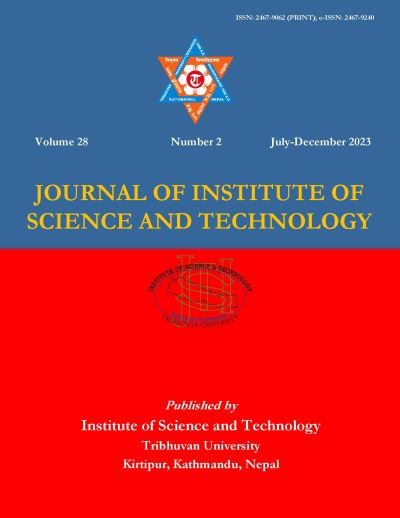Swimming Performance of Schizothorax sp. and Planning of Fish Passages in Nepal
DOI:
https://doi.org/10.3126/jist.v28i2.52018Keywords:
Fish passage, Schizothorax, swimming performanceAbstract
Swimming performance of migrating fish is crucial for the planning and design of effective fish passages. Commonly the fish swimming speeds are classified into five categories: 1) Optimum Swimming Speed, 2) Maximum Sustained Swimming Speed, 3) Critical Swimming Speed, 4) Maximum Domed Swimming Speed, and 5) Burst Swimming Speed. Swimming characteristics are related to the different species' adaptions to the environmental conditions. A variety of different factors affect the swimming capacity of fish which is directly related to fish size and species-specific morphology. A crucial abiotic factor is water temperature, which affects the fish physiology and thereby the swimming speed of the fish. This means that the fish's swimming speed can increase with increased water temperature. The swimming speed also increases with fish size. Fish often use burst speeds when passing a step in a fish ladder or entering a culvert. Burst speed is the highest speed attainable for fish, and it is the maximum energy output to be gained by using the white muscle (red muscle in salmonids). The burst speed can only be maintained for short periods of time (seconds). In the Himalayas, the main objective of many fisheries development plans is to secure future habitats and ensure up- and downstream migration of fish. Schizothorax richardsonii is often a targeted species in the area due to its importance as a food resource. If a fish passage is prepared for the upstream migration of fish, it is also crucial for the fish population development to ensure a safe downstream passage. Data on swimming performance for many of the native fish species in Nepal are scarce which complicates the design of suitable ecologically adapted fishways. In general, nature-like fish passes allow most of the species to migrate, followed by vertical slot fishways, meander fishways, and thereafter fish ladders of the pool-and-weir type. The key factor is to construct fish-passes that under all naturally required environmental circumstances can allow appropriate passage conditions of the targeted fish species.
Downloads
Downloads
Published
How to Cite
Issue
Section
License
Copyright (c) 2023 Institute of Science and Technology, T.U.

This work is licensed under a Creative Commons Attribution-ShareAlike 4.0 International License.
The views and interpretations in this journal are those of the author(s). They are not attributable to the Institute of Science and Technology, T.U. and do not imply the expression of any opinion concerning the legal status of any country, territory, city, area of its authorities, or concerning the delimitation of its frontiers of boundaries.
The copyright of the articles is held by the Institute of Science and Technology, T.U.




